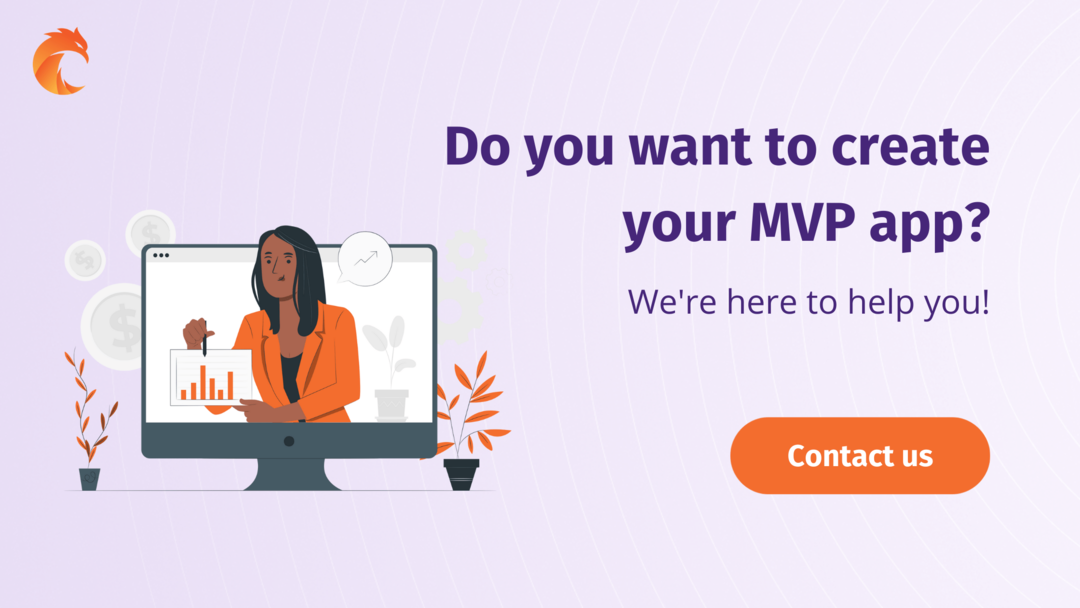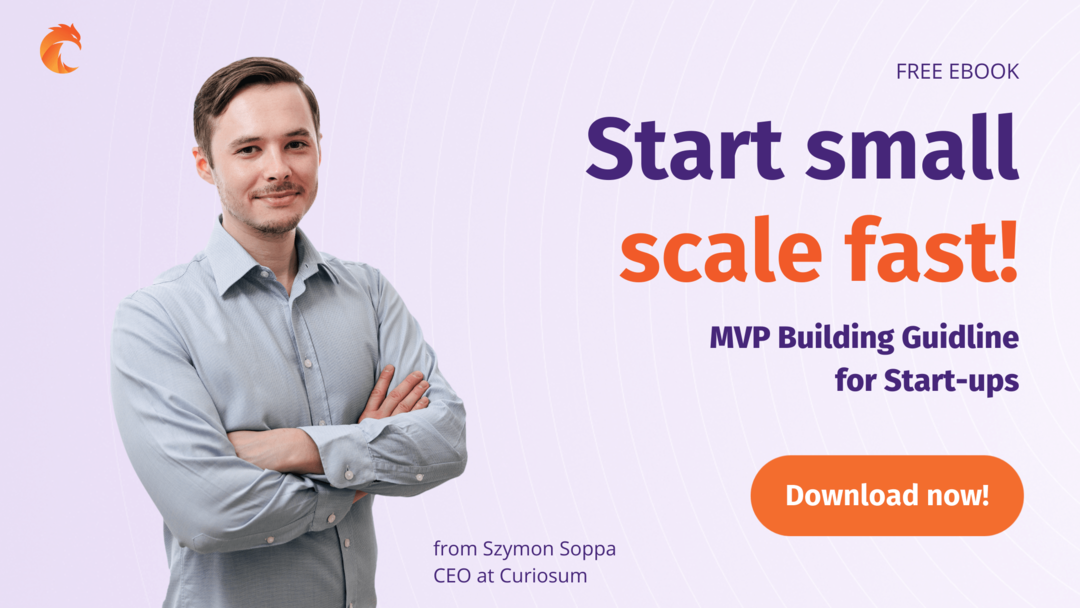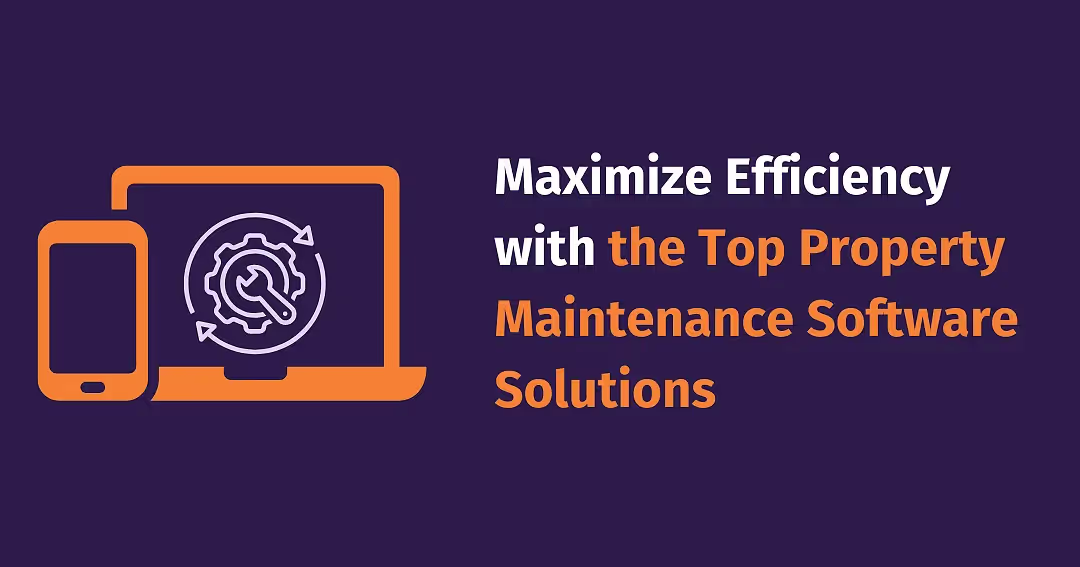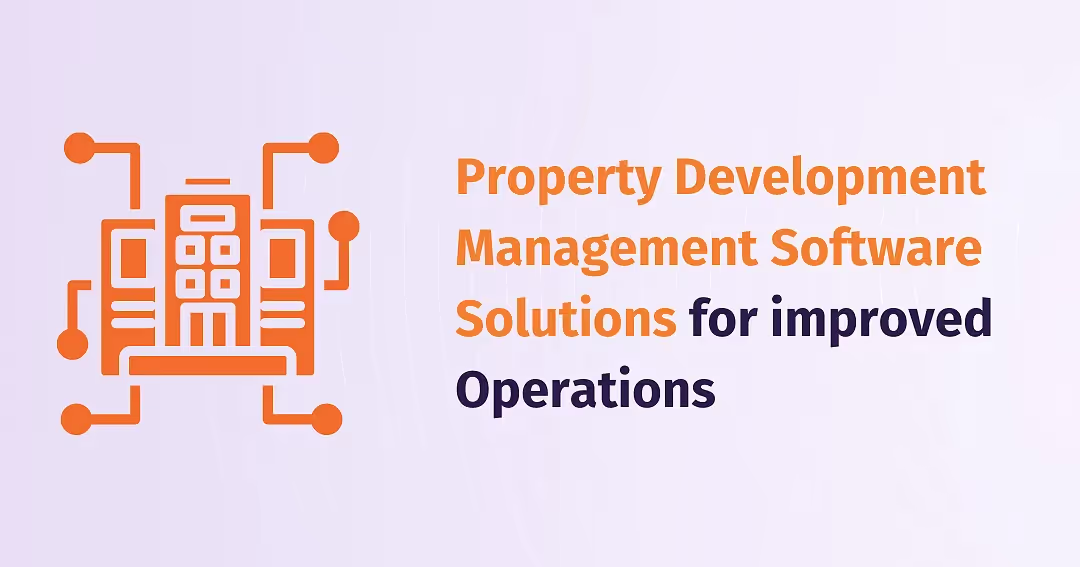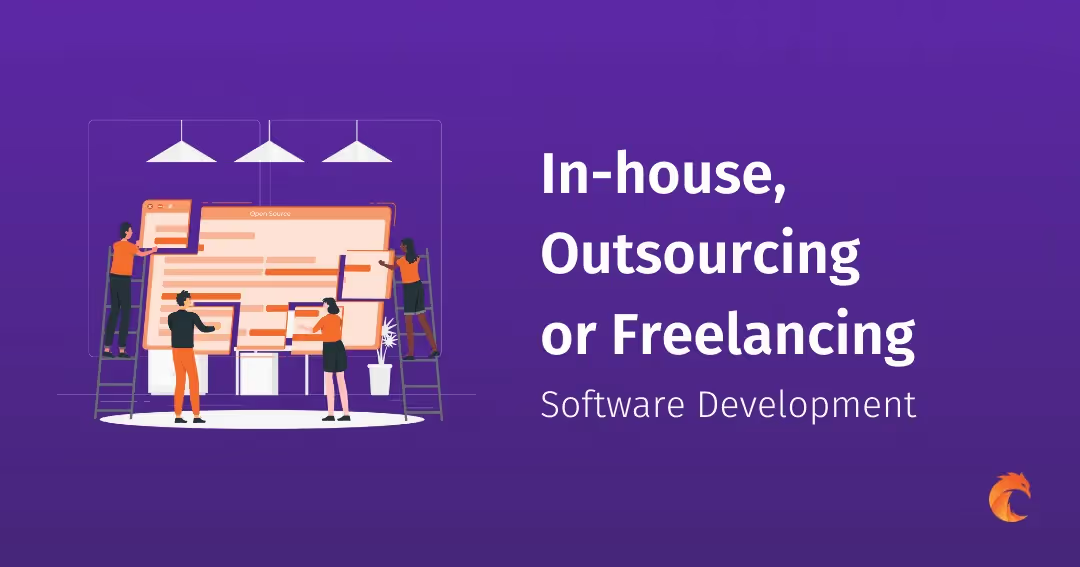MVP Marketing Strategy Complete Guide. How to Promote the Application at an Early Stage of Development?
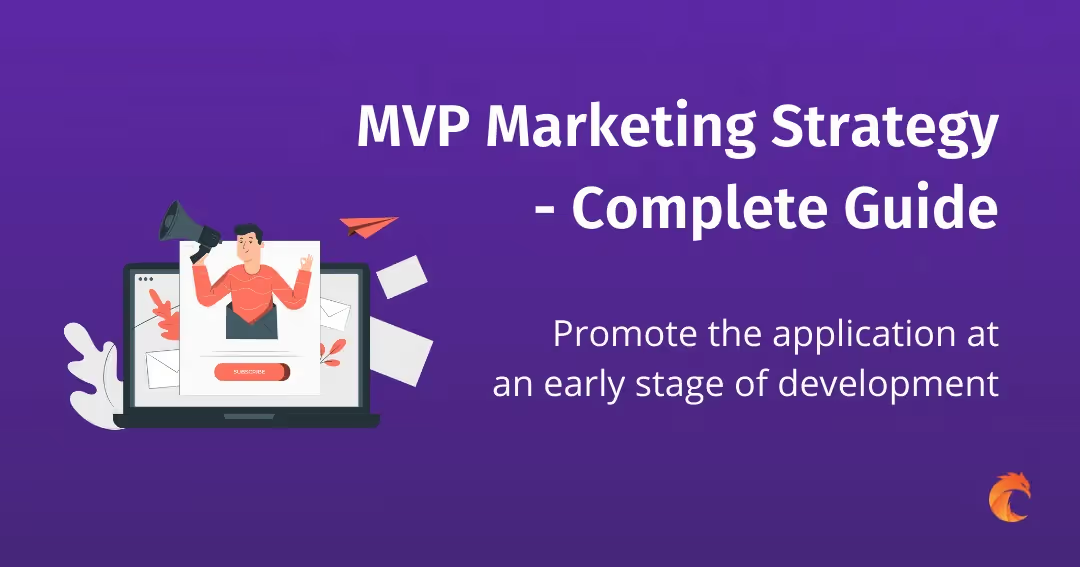

Why and how to prepare for the promotion of your application or SAAS system long before the premiere? Is the MVP stage a good moment to start marketing activities? How to promote your early-stage app and why you should do this?
The marketing strategy for the MVP really matters - if you develop it well, it will answer most of your questions about the next steps in your marketing communication.
When working on a mobile or web app, you ask yourself many questions. You are worried about technical matters, implementation, cooperation with contractors, team building, financing. However, many entrepreneurs I talked to claim that the biggest worry is user acquisition. Although we believe in our product and are convinced of its value, this one thought comes to the fore more often, the closer to the premiere. What if I fail to attract customers? Are they sure they will want to download? How to encourage them to register, test, use?
On the other side, we have potential investors. For them, your early-stage app (MVP) should already answer the question, "How much money I can make on it if I invest?". In the ideal world, you already have users feedback, and the app is organically involved and growing.
That's why you have to prepare yourself to create a good marketing strategy for your MVP - for the investors and future users as well. As I will present below, attracting financial partners that would support your idea is much easier if you acquire valuable positive feedback from your early app adopters.
Marketing strategy for an MVP application
To convince financial partners of your idea, valuable feedback from early-stage app users... is crucial. I will cover that later in this article.
To promote your MVP app, here are the first questions you have to answer yourself:
- What is the purpose of the app?
- What do people get from it?
- Who are the main competitors?
- Who are our target users?
- How is it going to get monetised?
Once you know the answers to the questions above, you will be ready to create a comprehensive marketing plan for an app. In short, that should consist of three steps:
- Implementation items
- Application premieres/publications
- Conquering the market

Implementation items in MVP app
The first element of the implementation concerns preparing an analytical plan - metrics that give real business value. This is important for your future investors (or just for you, if you are the only sponsor of the created app). Think about how you will get feedback from your users and how you want to convince them to test your app at its first stage. Suppose you plan to publish your app in some app stores (especially if it is a mobile app). In that case, the last implementation stage is ASO (App Store Optimization) - i.e. organic visibility in the app stores themselves as an equivalent of SEO.
To convince your users maybe even on the first phase of implementation you should concerned to ensure comfort and ease of use for the recipient [User Experience (UX) and User Interface (UI)]. This of course depends on what features of your MVP you consider to be the most important** **and whether they correlate with UX and UI.
Premiere of the app on the market
After completing the implementation stage, the application's premiere on the market comes! At this stage, you need to remember about planning marketing activities, like a good landing page, social media channels, or preparing materials in the form of an explainer (tutorials, videos). Once you start publishing information about the existence of a given app, you should be prepared for various comments of recipients. Users do not always want to add their opinions, so it is necessary to ensure that they are easy to post and do not leave those that are negative overtones unanswered. It is also time to plan a referral program that will help the app increase its reach.
Paid Campaigns for increasing your MVP users number
The last step is to win the market using paid channels - Google Ads, Facebook, Tik-Tok, Instagram, Twitter, Apple Search Ads, Pinterest or Snapchat, and other mobile advertising networks. Remember that you should prepare your paid ads strategy based on deep personas research. Only this can bring you a high user retention level with the relevant cost of acquiring a user.
The above mentioned three stages of the app marketing plan are the necessary minimum to appear in your mind when you think about an MVP marketing plan. Then, based on your experience and knowledge of the market, you will be ready to implement an effective step-by-step system of completed app promoting actions. Let's see this more clearly in the following paragraphs.
MVP promotion strategy and complete app marketing strategy - what is the difference?
Is promoting an MVP significantly different to promoting a full-blown app? Yes and no.
We should look at it from several points of view. Of course, the first fundamental point is costs vs return on investment.
Indeed, in the initial phase of creating our app, we will not have such resources for promotion as when it begins to earn for itself.
Another point differentiating the approach to promoting MVP and the complete app is the number of people to whom we address our marketing communication. Usually - the range of MVP is much smaller than a full-sized app (however, as we will find out later - not always). Typically, the MVP phase is only to collect data for investors, and at that point, it is to the investors of our project that we will direct our promotional activities.
So we can already see three areas differentiating the preparation of a marketing strategy for MVP and the completed app: budget, users, the purpose of the promotion (gathering users or attracting investors).
However, the similarities in promoting the MVP and the completed app can be certainly noticed in the methods and promotional channels used, as well as in the field of research of competitors or potential users (personas) of our app (both in the initial phase of its creation and when it is fully ready).
So let's try to collect this information step by step and consider how to analyse it.
An effective strategy to promote your MVP
A well-prepared strategy is the starting point for a marketing plan, to find answers to questions about details, such as "which influencers to choose", "which communication channel will give us the greatest ROI", "around what values and benefits to build communication". We should refer to the Lean Canvas matrix or other document describing our previously developed concept.
When promoting MVP applications, we must think outside the box but use proven tools and marketing strategies. For example, business applications can be promoted on thematic blogs and groups or with the help of email marketing.
Social media ads are worth using to reach a broad audience. You can also distribute instructional videos or prepare a promo video. You can use traditional advertising tools such as press releases and leaflets, create a dedicated landing page in which you describe the benefits of having an app, and use the power of influencers. The more channels and methods you use, the better. We should never forget our main goals on which the marketing of the MVP app must be based: the first is to encourage users from your target audience to test the app and get them to use it actively. Another one is convincing investors about the value of the app to invest in its future development.
Who is your target audience? User persona
Planning of promotional activities should start with building a complete marketing strategy. More! We should not start making an app without a well-thought-out target group, addressed needs, and without pre-designed communication. I believe that the analysis of industry case studies provides us with endless evidence that thoughtful, consistent, and strategically based actions give almost guaranteed success.
Conversations with the target audience will identify key users, their needs, habits and priorities will allow us to address the problem, find the most important communication channels, adjust the message and plan activities with the highest probability of success. I recommend using the excellent tools provided by the Lean Startup, Customer Development or Design Thinking methodology - use these approaches at every stage of project work, wherever you want to understand user personas better, see a broader context, generate ideas, solve a problem or test a hypothesis.
Competitor research
It is extremely important to understand the benefits of market research. Competition is fierce across all industries, and understanding competition is crucial when developing your overall strategy.
Market research on competition will help you better understand app marketing methods and what you need to create a successful app. Therefore, you need to be able to answer the following questions early in the development process to enable an exploratory journey through extensive market research:
- Who are your main competitors?
- How are your competitors reaching the same audience these days?
- How do you want your product to be different?
Several issues arise precisely from the competition analysis that may be useful to us.
Do we have a competition?
The first and most important thing is whether there is any competition at all, which is a strong indicator that there is a market for your product. If it turns out that no one has come up with something like us yet, on the one hand, it's great because we can be the first on the market; but on the other hand, it may mean that this market simply does not exist! In some cases, you may be the pioneer who builds a market that doesn't exist yet, but it's worth mentioning that it's both hard and very rare. But this is also worth considering.
The functionality of competing solutions
By analysing the competition, we can see what functionalities the competitor's applications have. Thanks to this, we can see what our app may be missing and what elements should be taken care of. Based on what the competition has or does not have and on the opinions of their current users found on the web, we can prepare even better for the MVP phase of the app and take care of those key elements that must appear in the initial phase of the app project.
Communication channels
The third issue when analysing the competition is the research of which channels they use for promotion and how competitors advertise themselves to get potential customers. This will facilitate the process of preparing a marketing strategy for your MVP. Thanks to this, you will find out which relevant keywords your competition is trying to advertise, through which channels, what type of content they create. It will allow you to estimate the budget for paid advertising methods better and prepare interesting user-generated content.
Design of competing applications
After collecting information about a few similar applications to our app, we can also pass it on to the person responsible for designing an app. Thanks to this, it will be much easier for the UI & UX designer of the app to find out what colour schemes we like, what fonts we would like them to use, and some other additional information, such as the navigation method or appearance of the icons. In general, this way, it is much easier to convey our taste and what potential customers like, which means that the graphic designer will provide us right away with a product that has a chance to gain interest in its implementation on the market.
So, these two issues, i.e. the analysis of the competition activity on the one hand and the study of what we like on the other hand, should be carried out before we create a brief for our app. By analysing the competition, you can learn a lot about the planned MVP product, and it is worth doing it at this stage, because thanks to this, already at the stage of creating a brief or POC, you will know a lot more about the market for your future app, on which it will operate.
Pre-launch stage of mobile and web apps - be aware!
To sum up - take care of a good, well-designed MVP product. Not only visually refined and technologically robust but designed with the user needs in mind, solving real problems and providing good experiences (and here again - the source of work on it should be business analysis, for example, in the form of Lean Canvas). The complete pre-implementation analysis will allow you to create an effective marketing strategy and an adequately prepared product for user testing.

MVP app's success thanks to existing users
Why do we talk about all of these things? MVP marketing and promotion can have a really huge impact on the future product's success. Because who better than the current users focused around your brand will help you verify the idea, validate your business assumptions and, after testing the MVP, promote the final product? Use the atmosphere of building tension expectations, and even involve your MVP users in work on the final version! This way, you can gain potential ambassadors of your brand.
An additional benefit is that, at the same time as building relationships, you collect feedback from them, which will be a critical element for the investors of your app if you plan its development using external forms of financing but will also affect the final success of the application.
User testing to identify bugs
Moreover, the MVP's users may also identify some bugs or errors. Conducting testing is an integral part of the MVP process. Beta-testers can give valuable feedback on the user interface and experience, and even some functional bugs.
In the end, the goal of the MVP is to gather user feedback and make improvements to the product accordingly. In addition, the MVP represents an opportunity to gain customer validation of the product in the digital world.
App store page - comments from the users are priceless!
Recommendations have enormous power, so let's ensure user satisfaction and obtain as many ratings and reviews for the app as possible. If you plan to develop your MVP app, it is worth taking care of users' opinions immediately after launching it in app stores. The more opinions there are right after the app is published - the greater the chance of success!\
How to encourage early adopters to leave some reviews? You can create a popup within the app that shows up after some time and asks a user to rate the app in the store. It's as easy as it sounds, and very powerful at the same time.
App launch time - methods and content to promote MVP for success
Finally, we are coming to the methods of promoting your MVP. As we said before - in terms of the methods used to promote the product in the MVP phase, we can actually use the same channels as when promoting the full app. Differences may be visible at the scope of such promotion, but some elements will simply be universal.
Regardless of the chosen methods - it is also good to take care of interesting content that stands out from the competition, gives users exciting experiences, and thus - attract their attention and encourage them to test the app at an early stage of its development. And here you have to remember, that in fact, your MVP doesn't even need to be a product. It just needs to be a well-designed test with a simple, straightforward experience. The perfect example is Dropbox - their MVP was just the explainer video that demonstrated its main features and use cases. Dropbox explainer video MVP was released to Hacker News on April 5, 2007, as part of its application to Y Combinator. As we know now - the experience of seeing a video about the product was enough to sell the idea.
Therefore, use the list of methods described below as a source of inspiration, but remember that you do not have to use all of them. Ultimately, when promoting an MVP, what matters is an original idea that will simply grab your users' attention. Today, in a completely digital world, in the flood of information, one video could be a bit too little. But the most important thing is still the content built out of out-of-the-box thinking.
Build a remarkable landing page
With a simple but well-made app landing page, your users can get the essential information. A website with valuable content is one of the primary methods of converting a website visitor into an app user. This is such a base because most of the other promotional elements - social media, blog posts or Google ADS campaigns will redirect the user to the information contained on the website.
You should design the landing page to provide value and include references to your app. Think carefully about UX in terms of conversion and create a publication plan to maximise organic traffic for keywords important for the app. Also, remember about consistent visual branding (logos, colours, fonts).
It's important to visualise what users can expect if they install the app. Displaying user reviews and including screenshots of your app's user experience is critical. That gives social proof from actual users of the app.
Your landing page should include links to your app in the App Store and Google Play Store with a clear call to action. What else should you have in mind creating a landing page for your MVP app?
Point the issue
What is the exact problem your target audience is struggling with? Which pains does your product solve for users? Name it. Describe feelings users can have. Tell what kind of frustration your app will minimise. Connect with them and show that you understand their issues. Explain why your app was actually created for.
Value of your app
Define your value proposition and messaging. It’s why users will use your app and will want to try it even on the MVP stage. The above-pointed issue is an excellent introduction to this part - remember, the most effective value propositions are exclusive, specific and pain-focused.
The quality of users you attract to your app is more important than the quantity, so make sure you understand your target audience and craft your content accordingly.
An interesting way to reach users from technology and business industries can be a case study from the app development process itself, showing transparently, live, the backstage and the intensity of work on the project. Well-thought-out and made, providing specific substantive value, can have a high viral potential.
What problem is the app going to solve?
To narrow in on your value proposition, answer the questions like "Why is my product desirable and exclusive?", "Which benefits are better made than in my competitors' solutions?".
Users from your target audience are aware of the problem solution, and your product can be suitable for them. That's why before we talked about user personas deep research - if you know which stage of awareness you're speaking to, you can craft an effective value proposition on your landing page. Of course, your value proposition and CTAs need to align with your potential users' current stage of awareness.
Even defining the ONE, most important value you want to offer your users will give you a successful, high-converting website that addresses ONE single visitor and delivers ONE promise to them.
Don't try to answer all of the problems at one time. It is not necessary, especially in the MVP stage. Instead, focus on these functionalities that meet the most desirable values of your users.
Creating promo demo video for the app
To increase the effectiveness of the message on your website, you can strengthen it by preparing a video based on what we discussed when creating the landing page.
Such a video can also be a source of information completely independent of the landing page. Show the solution to the problem properly, show the values of your app, and even explain exactly how it will work by creating a short video instruction as a teaser.
A good promo video can do wonders for helping people understand what your app is all about. By seeing it in action, they can make a very conscious decision about their choice to test out your app. Videos are one the most popular way to showcase everything your beautiful and well-built app has to offer. It’s a quick and easy way for someone to understand the most common use case behind the app and how they could use it.
Once you have finished creating your demo video, be sure to leverage your social media channels and other platforms to promote your app. For example, you can include your demo video in blog posts, Instagram or Tik-Tok, or Youtube channels.
Show beautiful designs - don't make it cheap.
Good UI / UX is also essential. The app needs to interact efficiently, deliver a good experience, and optimise conversion.
Designing for mobile is different from that for web applications. A good UX designer, when creating a design of the app, should consider such nuances as the device the app will be used on. For example, the screen size of the latest smartphones forces the placement of the entire interaction (buttons, active fields) in its lower half. Unfortunately, most users' thumb does not reach the top of the display, so using an app designed this way will be tiring.
Search engine optimization
SEO (search engine optimization) matters. By identifying "best-targeted" and most relevant keywords you want to rank for, you can create better ads on Google but also get a better organic position in search results for your MVP.
The primary keyword research begins when describing the user persona and doing research of the competition. Also, conversations with potential users from your target group will introduce you to key phrases that they can use to search for your app in the future.
It is worth spending some time observing selected keywords, testing them, and then verifying them. If you can see that these keywords convert organic website visitors to app users willing to test the app - that's great! This means that the phrases you choose reach your target audience. On the other hand, if your website has traffic, but it doesn't convert, then you have two options - either the content, in general, did not convince people entering your landing page, or the key phrases attract people you didn't want to attract.
App Store Optimization ASO
Now let's consider the topic of mobile app marketing in particular. More than half of the users of mobile applications discover them through an organic search on Google Play or the App Store. This means that the positioning of ASO (App Store Optimization) mobile applications is a priority. The name of the mobile app and the keywords that will be included in its description plays a key role. The ASO step should start with rigorous, drilled-down keyword research from which you derive strategic App Store and Google Play Store app descriptions that are followed by the creation of beautiful, practical app imagery.
It may not seem so important to you, but even if the user finds your app, they do not have to decide to download it. Moreover, he may not even pay attention to it or remember it.
Designing an easily recognisable and eye-catching icon and app name already in the MVP phase will significantly affect its future recognition. Keep in mind that the icon is the first element that each user will see and associate with the app. The most popular social media applications icons have distinctive colours and characteristic signs - the little ghost is associated with Snapchat or three lines with Spotify. In contrast - we have thousands of music listening apps with the double note icon - do you think they can stand out so much from the crowd?
However, it is essential not to forget the most important - highlighting the features that make the app useful. This element will decide whether the app will be on a mobile device or just scrolled.
Email marketing for the MVP app
Do you check your email every day? Me too! So, what do you think - is it a powerful channel for MVP marketing communication? Of course!
Email marketing is one of the best drivers in user acquisition, and it can be highly successful in improving your app's retention rates, return on investment (ROI) and brand awareness. Nowadays, marketers use email marketing, even more, to build their brand and keep their users engaged. It seems to be even more effective than social media, where specific algorithms show your communication by rules nobody knows and understands... It is also more personalised. More - usually, people on your mailing lists are interested in topics you want to share with them.
As you probably know, your email campaigns won't be worth creating unless you have a sufficient number of subscribers. In order to encourage visitors to subscribe you should communicate the value of being your subscriber by other things, encouraging them to sign up to your list.
But it is worth it because later, by communicating the benefits correctly, you can encourage the most valuable users to be interested in your MVP app.
Building a mailing list
Okay, how to build a mailing list to promote your future MVP app?
Usually, to create a mailing list, we use specific content, a lead magnet. A lead magnet is one-time content action planned for creating a conversion. The model is simple: we make an interesting, free product (e.g. ebook) for download in exchange for a subscription to the newsletter. This product/ebook must be designed in such a way that it provides real value and includes references to our app. Remember about consistent visual branding (logos, colours, fonts) connected with the design of your MVP. After some time, you launch an exact campaign for promoting the MVP app.
Looking at the examples of many applications, one more thing could be added here - creating a mailing list for beta users by promoting the idea for the application on portals such as Reddit, Hacker News or other startup-related sites. Such a user receives information when the product is ready, but the subscriptions for mailing last long before the launch of the MVP version of the application.
A mailing list can also be filled by implementing a pop-up for your newsletter on your official website that already exists (if it has some related content blog to your app solutions). To reach the widest audience, you can also promote the opportunity to subscribe to your newsletter across social media channels.
The other option is adding your app download links or a link to your MVP app landing page to your regular email signature. It can become an effortless way to drive downloads simply by sending the emails you usually send to your customers and business partners (if they are related to MVP's target users). If you have a few people in your business, make sure they do the same.
Social media marketing for MVP - isn't it too fast?
Facebook, Instagram, TikTok, Linkedin and others - social media channels are powerful, and you can use a different type of content on them to get your potential users attention.
Social media is a must for app promotion. Based on the target audience and competitors' research, you will know which social media will be best for your app's user acquisition.
Content for your social media channels can include blog entries, competitions, discussion threads and user-generated content. Don't spam your audience by being overly promotional; instead, try to connect with your audience in a meaningful way by posting about the things they care about and joining in on the conversation in groups.
You can also integrate social media into your app and enable users to easily share content from your app on their social media channels.
You might think the MVP stage is a little too fast for broad social media campaigns, but this is a great place to offer free trials of your app on some social media groups, discuss MVP app's features that are necessary to meet user needs, to promote your app landing page and help with app's visibility in search engines. Social media are a fantastic opportunity to start building your "app evangelists" group of users.
Social media influencers - hot or not for MVP?
Social media are also powerful influencer platforms. Some of them have millions of followers. Your role is to use it and convince them and ensure they post about and link to your app in inventive ways. It is definitely the fastest way to app promotion. Influencer marketing has taken the marketing industry by storm in recent years. This is a great way to introduce users to the functionality of your app and give them a unique reason to install based on their interest in an influencer.
Let influencers know you are building an app even before MVP is done. First, find out if they will find some time to discuss the app's development or gather some feedback. Then, you can propose to them to work towards building an app that caters to their needs. But, of course, before that, make sure your values, interest, and customers align with the influencer's audience.
Developing mutually beneficial relationships with influencers will go a long way in helping to promote your MVP and complete app as well. Influencers have the considerable power to engage and convince making decisions of a particular group of people. Try to find influencers that genuinely value your idea, and they will be able to honestly promote your app based on the solutions it proposed, not only because they get cash for it.
Their viewers and your potential users as well will quickly catch on that the influencer is just being paid to promote something. So, naturally, this is the last thing you want.
Power of blog post
Blogs can be another point of influencer marketing, but we also mean your blog and guest posts when talking about blog posts. Blog posts are the perfect way to strengthen your search visibility to find new visitors and reach your target audience. You should definitely consider using them in your MVP app promotion plan.
If you choose to host your blog, it should be strategically shared on social media channels. In addition to boosting your app promotion, with blogging, you can discover additional content types (even by using Google Analytics) that will benefit your overall strategy.
Placing a link to your application in regularly scheduled blog entries is one of the best strategies for promoting the application and collecting feedback about its functionalities from users that you can use. You can do this by creating a whole blog post for your app only or by including a call to action at the end of each blog post to invite readers to download your app.
When writing a blog post about your app only, write a complete story about your app and let your target audience know its purpose. Tell them how this app can make it easier and more accessible. Include app links, screenshots, and videos to help understand them well.
As mentioned earlier, you can also encourage influencer bloggers to build hype around your app.
Suppose your application is related to marketing; do a google search for "top marketing apps" and see what results you will get.
Among the first high scores to appear, probably at least 4-5 are high authority blogs that you can contact to recommend your app. You can gather a vast audience to learn about your MVP if you take that shot. Recommending your application through blog entries gives you long-term benefits in the form of targeted traffic, building a link profile and gaining additional ratings and reviews for your application.
Another option is publishing guest posts on influencers blogs written simply by you.
Show everyone that you know what you are talking about and share your industry knowledge while subtly weaving their information about the application you are creating.
Other blogs will appreciate informative, well-written content, which will further help strengthen their site. You will then make your app available to new audiences and provide yourself with backlinks to improve your SEO. It is a win-win situation for both parties.
Apparently, blog posts can be one of the first channels to introduce your MVP and slowly showdown.
Promoting an MVP to chase investors
After establishing product-market fit, additional funding will likely need to be secured to achieve app virality. As I mentioned at the beginning of this article, you can promote your MVP app to attract users. But what to do when you want to attract future INVESTORS to your application by promoting MVP?
How to attract funders to support your application? How to obtain funds from Venture Capital organisations / Business Angels?
Venture Capital/VC Preparation of your MVP app
Approaching investors is not easy work, but If you have decided to build an MVP, you choose the right way to get investors' attention. Why? Because MVP is an excellent tool for validating your idea.
Investors want proof that your idea will work, and nothing proves this better than having an authentic, working product that first users already test. Then, you are ready to create an outstanding presentation to pitch to potential investors and develop your project!
Answer the issues with an excellent presentation
There are two main things you need to do to get investors' attention:
- First, sell a vision of your app and business idea - show that you know exactly what users need, how to build it and how it will bring the return on investment. Your faith in your product and your investment in it is the thing that potential investors will be looking for.
- Sell results - show that your product works and can generate income. And if your MVP already has reviews, that's a great bonus.
It is also essential to show interest in investor activity. Look for all the information available about your potential investors. You can also contact the previously financed startups and ask for their advice.
Knowing what other projects your investor has invested in can really help. Some investors choose startups for their portfolios based on specific criteria. Try to understand what they are looking for and prove that you can offer it. Once you know what they are looking for, it will be easier to promote your MVP to get funding.
Get ready for specific questions
Be prepared for any questions that investors may ask during the product presentation. If you show them that you know what you represent, they will form a reasonable opinion for themselves. Indeed, MVPs can constantly be reworked and improved, but you only get one shot at a first impression.
Most investors will ask you some questions. For example, you should prepare to have an in-depth conversation about your PR / marketing strategy, target market, competition, finances, and other personal matters, including motivation and qualifications. If you know what questions to expect from investors, you can prepare the correct answers in advance.
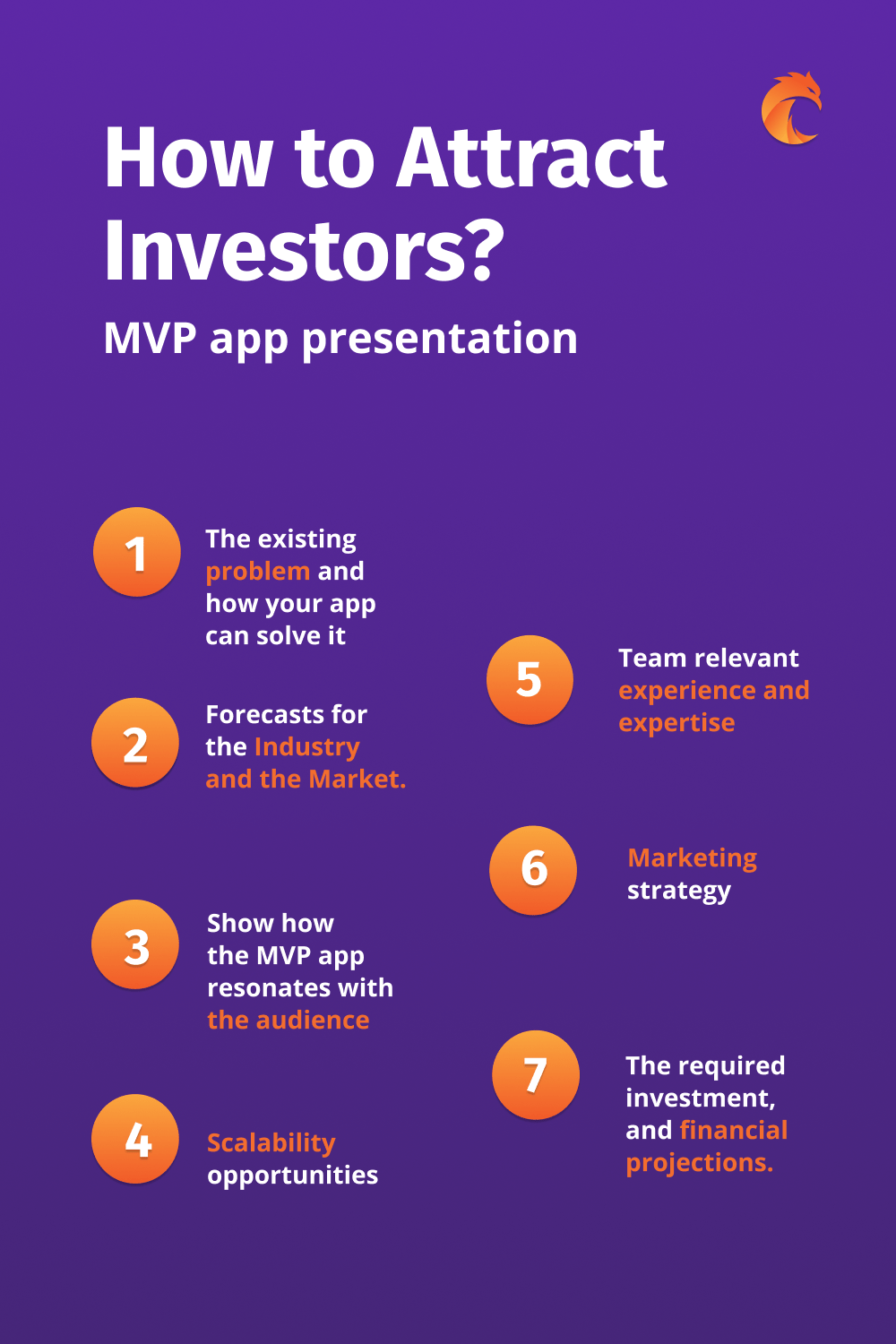
What do investors want to see in an MVP app presentation?
Creating a presentation for investors is a complex and labour-intensive task. The key is to back every statement with relevant and reliable data. Remember - an app idea presentation aims to demonstrate demand and market for your product. So in your presentation, you have to address risks investors are considering when funding any startup: team competence, market potential, and a possibility to convert your business idea into a product that will generate revenue.
Let's create a "must-have" list for presentation/speech about your MVP app to investors:
1. The existing problem and how your app can solve it. Make a list of points that can be solved through a new app. Your product must solve a problem and meet the needs of the client. As we said before: MVP is a great tool to prove the existence of a specific issue or a target audience's pressing need, and it should indicate to your potential investors your methods of measuring consumer orientation.
2. Forecasts for the Industry and the Market. You need to present competition and market analysis: an overview of your key competitors, how your product will differentiate itself on the market, and the market potential. A developed product begins with value and risk assessment.
3. Show how the MVP app resonates with a particular audience and present its usability, value, functionality, and benefits—present brief product overview: key features, the description of how it works, the target audience.
4. Scalability opportunities - if your product can solve issues for a large number of people but is capable of doing it for an even more significant number of users, investors will definitely show interest. This is a competitive advantage that the MVP must clearly demonstrate.
5. Team relevant experience and expertise. A short company overview and key facts about your team, your objectives and the concept behind your business will help you create the image for investors of who you are and how you work. It is important to show a professional attitude and enthusiasm. The founders' and product implementers' attitudes can prove to an investor that the MVP development has "traction", i.e. relevance for the customer, which will motivate the customer to use your app.
6. Marketing strategy: your key marketing channels, potential strategic partnerships, key visual... All of the things we described above as your marketing opportunities to get users attention. Choose from them and present your investors what marketing activities they can expect from you.
7. The required investment, and financial projections. Your investors want to know precisely what are the current financial situation and burn rate, and also what is the forecast of the expenses and expected ROI.
Using these materials when pitching to angel investors, you show that you take your business seriously and are determined to make it work. This can be a powerful competitive benefit over other startups.
Start growing your app from the beginning with an MVP
So if I were to summarise what is most important in promoting an MVP application, I would write "try, test, hypothesise and verify them quickly." Do not get involved in ineffective activities - especially when they generate costs (e.g. creating ubiquitous content, advertising campaigns). Instead, analyse performance, measure ROI, draw conclusions and optimise. No advice from the Internet will give you as much as smart experiments on your product. Focus on what will bring you specific results in acquiring users and investors.
Hopefully, thanks to this article, you have all the insights on how to promote your early-stage app and what you need to get started with to raise money for your MVP app idea. Don't worry. Go on now, and get big!
Create more features and launch new releases of your app
As you can see, the sky is the limit in terms of MVP app promotion. Treat it like any traditional product launch and spend time putting together solid app users and investors acquisition strategies. Remember that the quality of users you attract to your MVP app is more important than the quantity, so make sure you understand your target audience and craft your advertisements strategy accordingly.
Now that you also know what goes into the blood and bone of a tool that would help generate funds, don't wait. Get up and hit your app market, and then don't stop until the complete app is launched.
Ready to scale your business with the right tech partner?
Related posts
Dive deeper into this topic with these related posts
You might also like
Discover more content from this category
Struggling with managing maintenance for your properties? We’re presenting the world of property maintenance software.
This article looks at how such system can automate tasks, improve efficiency, and integrate with your systems, aiding your decision-making process.
As the CEO of an international company or a budding start-up, you are faced with the challenges. It is a responsible decision that will affect the development of your company, but also its economic status and market position.


